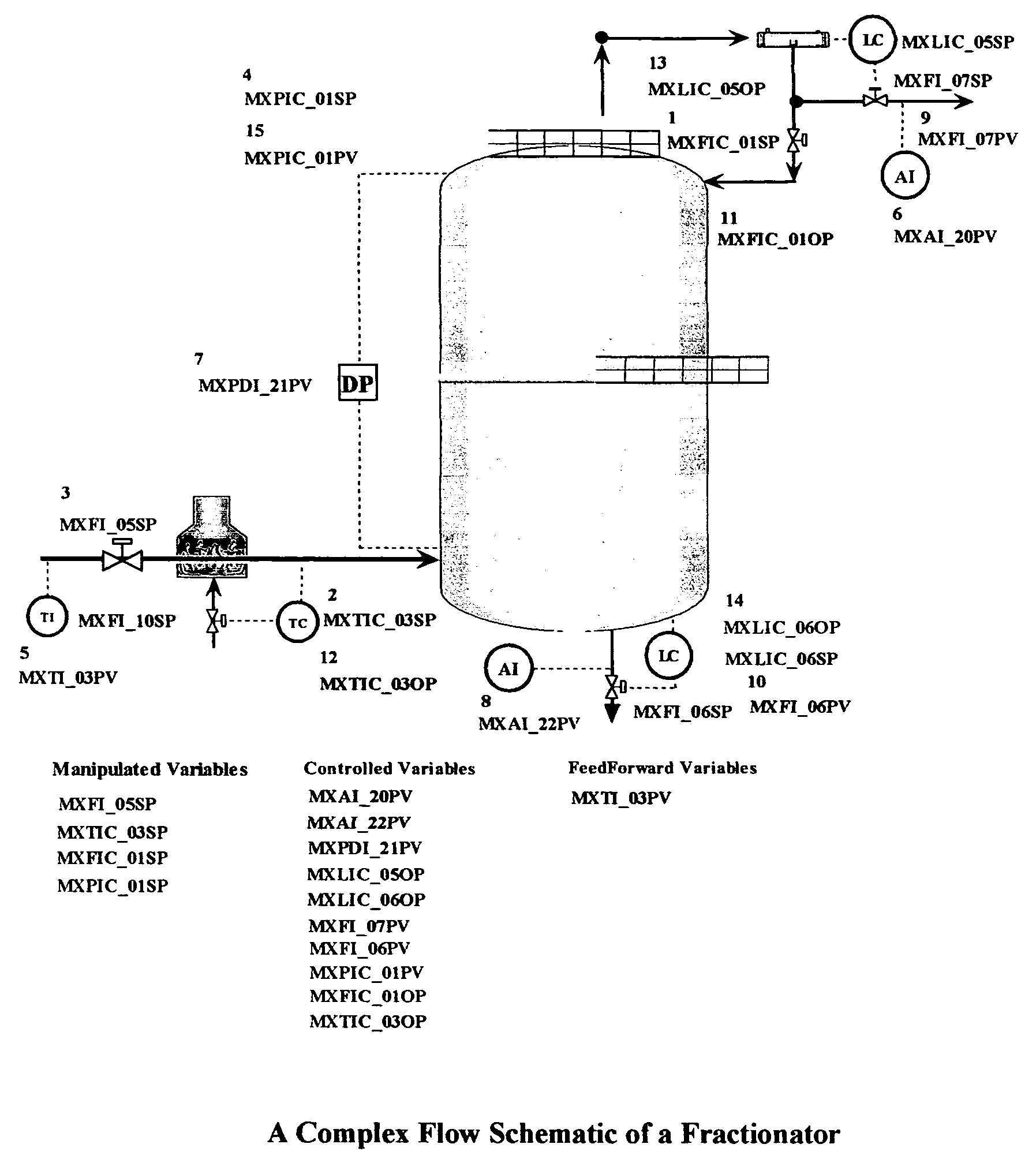Use of core process models in model predictive controller
a technology of process models and predictive controllers, applied in the direction of electric programme control, program control, instruments, etc., can solve the problems of affecting performance, entail considerable cost both in and model development entails considerable cost both in terms of engineering services and production disruption
- Summary
- Abstract
- Description
- Claims
- Application Information
AI Technical Summary
Benefits of technology
Problems solved by technology
Method used
Image
Examples
Embodiment Construction
[0039]The present invention characterizes a dynamic process model relating to a controlled variable with respect to a manipulated variable set point as consisting of a defined set of sub process models as described herein. FIG. 1.1 and FIG. 1.2 depict two levels of process model characterization disclosed in this invention. The sub process models as disclosed below provide an explicit method of updating a process model when the manipulated variable tuning / configuration is changed with minimal additional model identification or no identification when done in conjunction with an appropriate simulator.
[0040]The invention presented herein seeks to characterize the underlying dynamic effects arising from the manipulated variables regulatory controller interactions into sub elements such that only a sub-set of the models need be re-identified in order to update the entire process models set used in a model predictive controller. Basically, a manipulated variable regulatory controller gene...
PUM
 Login to View More
Login to View More Abstract
Description
Claims
Application Information
 Login to View More
Login to View More - R&D
- Intellectual Property
- Life Sciences
- Materials
- Tech Scout
- Unparalleled Data Quality
- Higher Quality Content
- 60% Fewer Hallucinations
Browse by: Latest US Patents, China's latest patents, Technical Efficacy Thesaurus, Application Domain, Technology Topic, Popular Technical Reports.
© 2025 PatSnap. All rights reserved.Legal|Privacy policy|Modern Slavery Act Transparency Statement|Sitemap|About US| Contact US: help@patsnap.com



